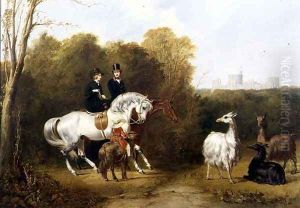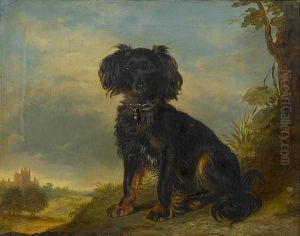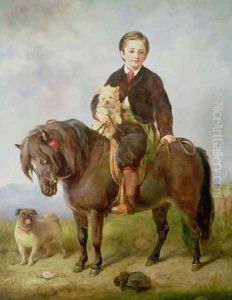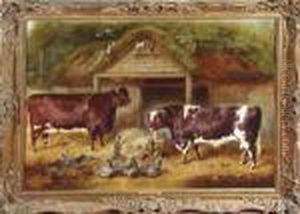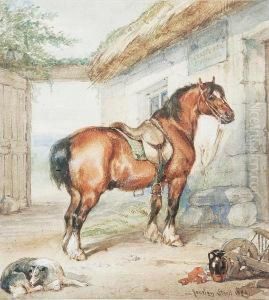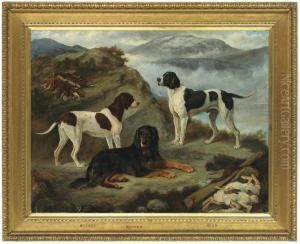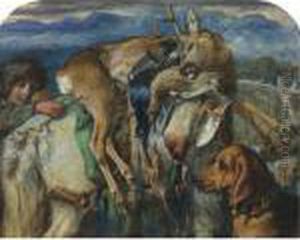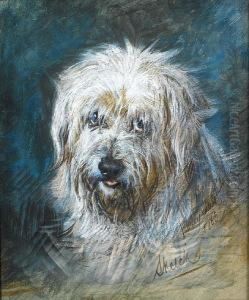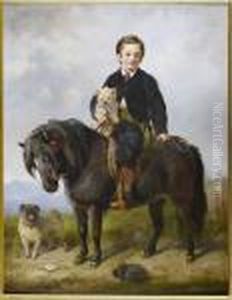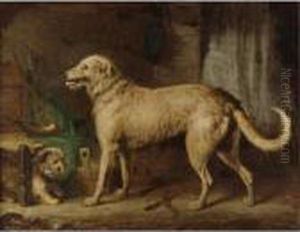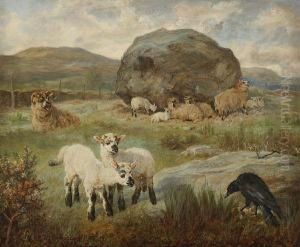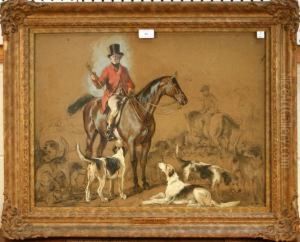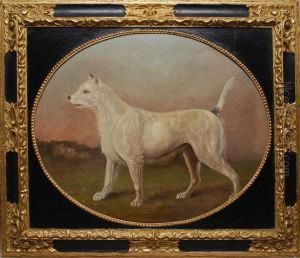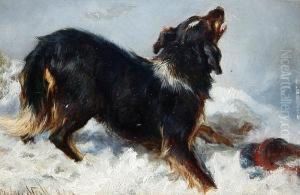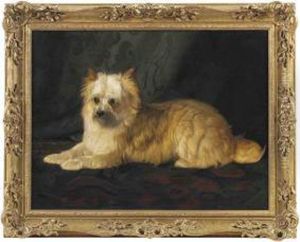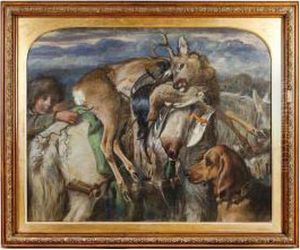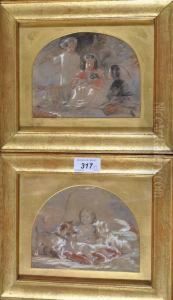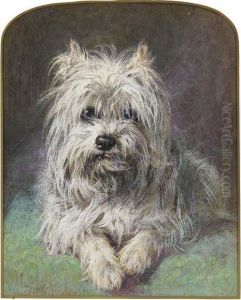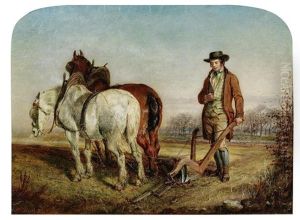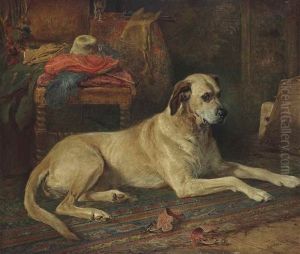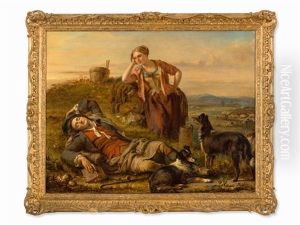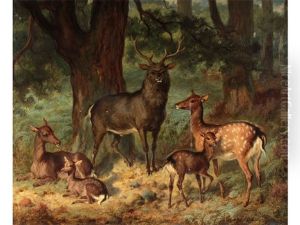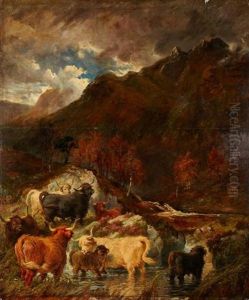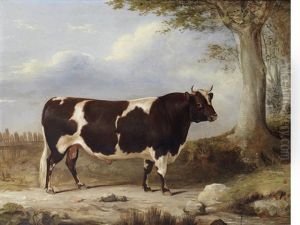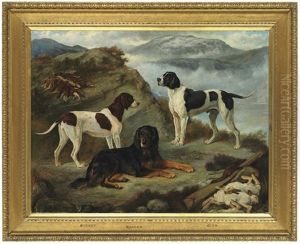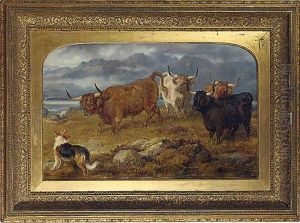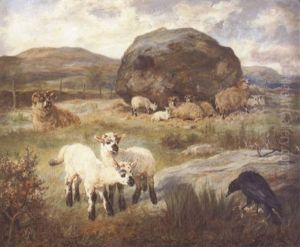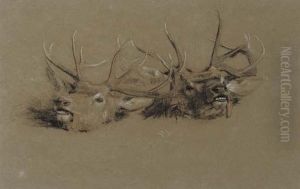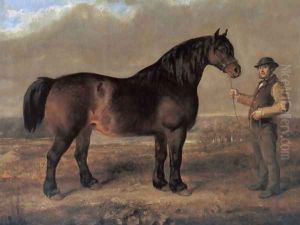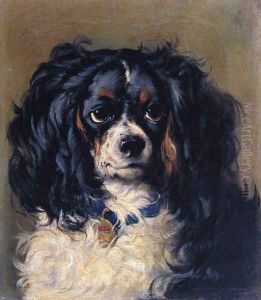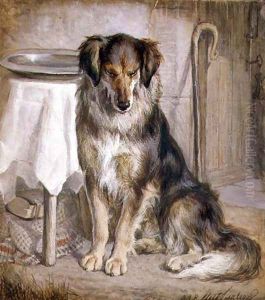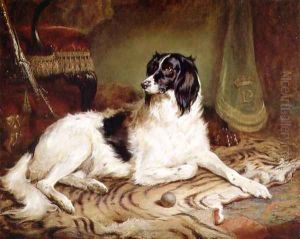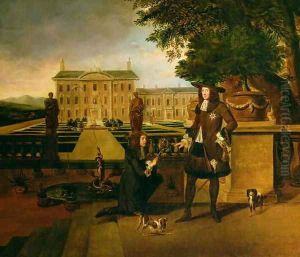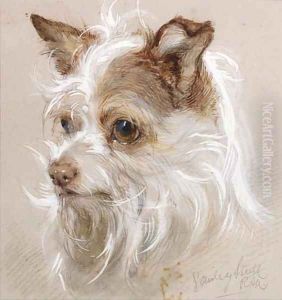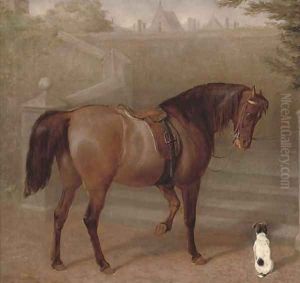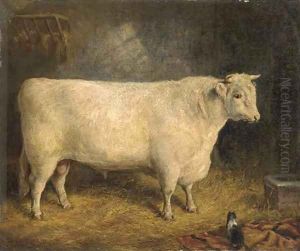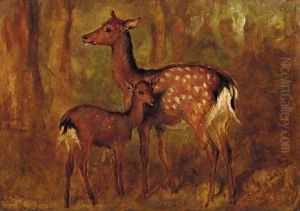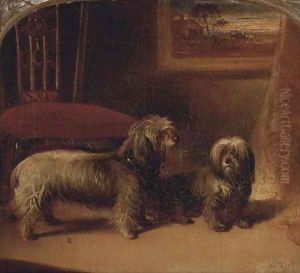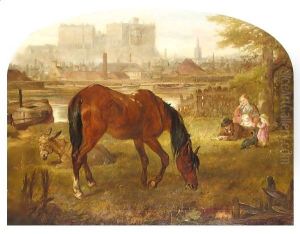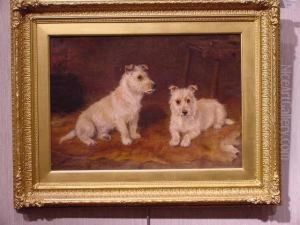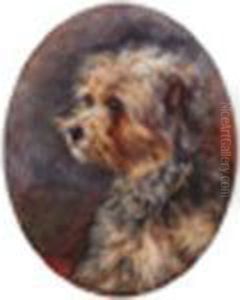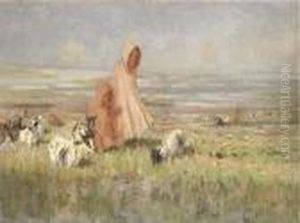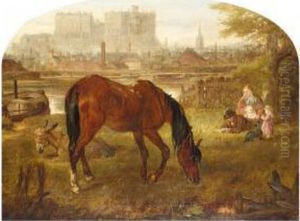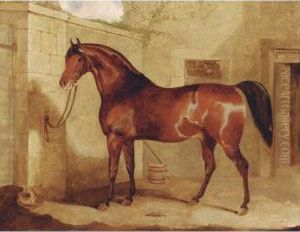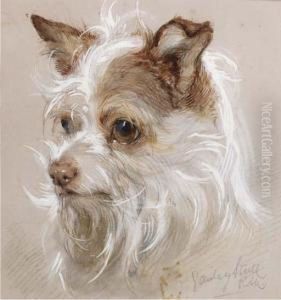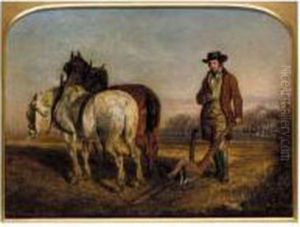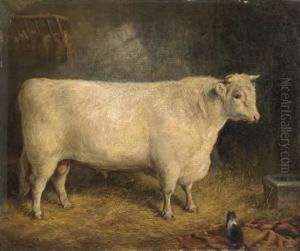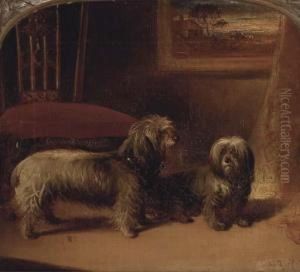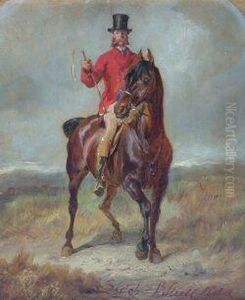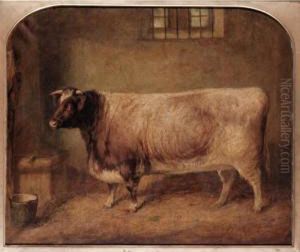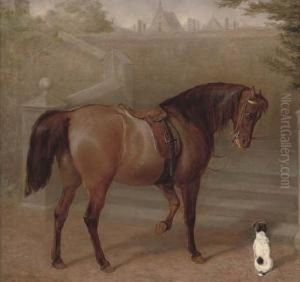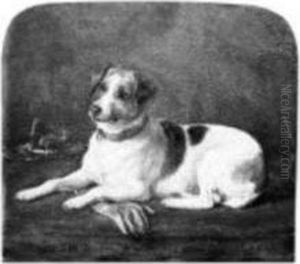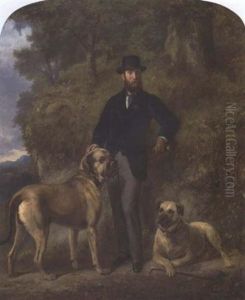Gourlay Steell Paintings
Gourlay Steell was a prominent Scottish animal painter who is best known for his portraits of pets and sporting scenes involving animals. Born on November 18, 1819, in Edinburgh, Scotland, Steell was the son of an engraver, John Steell, who was also his first art teacher. His younger brother, Sir John Steell, became a well-known sculptor. Gourlay Steell's talent for art was evident from an early age, and he soon focused on animals as his primary subject matter.
Steell's work was influenced by the renowned animal painter Sir Edwin Landseer, whom he admired greatly. Although Steell never achieved the same level of fame as Landseer, he became one of the foremost animal painters in Scotland during the 19th century. Steell's paintings often depicted dogs, horses, and other animals in naturalistic settings, showcasing his ability to capture their movement and character.
In 1844, Steell's painting career received a significant boost when he was commissioned to paint a portrait of Queen Victoria's favorite dog. This commission led to further royal patronage, and Steell eventually became the Queen's animal painter for Scotland, following in the footsteps of Landseer who held a similar position in England.
Throughout his career, Steell exhibited his work widely, including at the Royal Scottish Academy, of which he became a full member in 1859. He was also an honorary member of the Royal Academy in London. Steell's paintings were celebrated for their technical skill and emotional depth, often capturing intimate moments between humans and their animal companions.
Gourlay Steell's success allowed him to travel and work in various locations, including at the royal residence of Balmoral Castle, where he created several works for Queen Victoria. Despite his ties to the royal family, Steell remained active in the Scottish art scene and contributed to the development of the arts in his native country.
Steell passed away on September 28, 1894, in Edinburgh. His legacy is preserved through his paintings, which continue to be appreciated for their portrayal of animals and their contribution to the genre of animal painting in the Victorian era. Steell's works can be found in various art collections and museums, including the National Galleries of Scotland, reflecting his enduring impact on Scottish art history.
